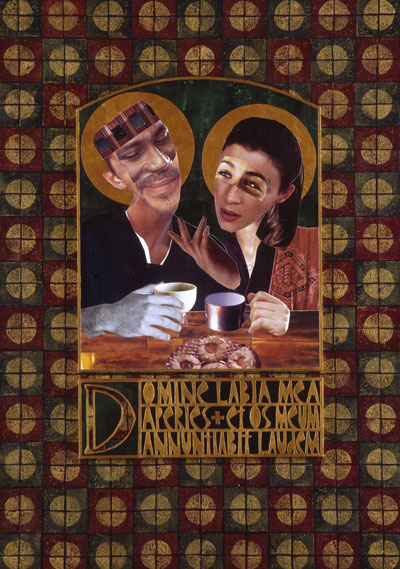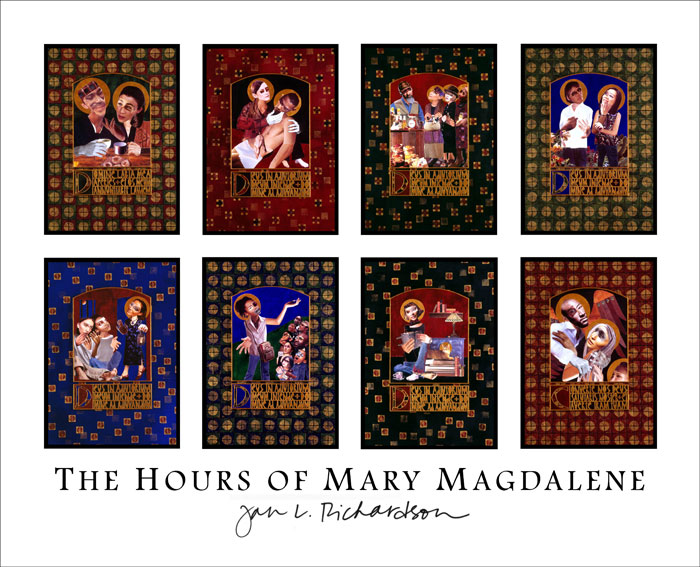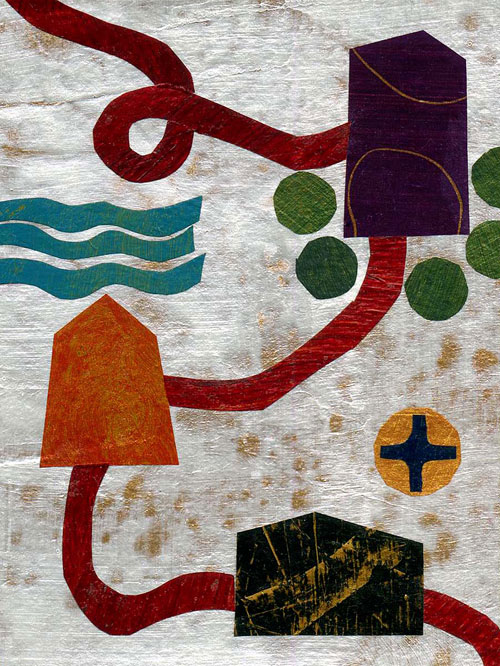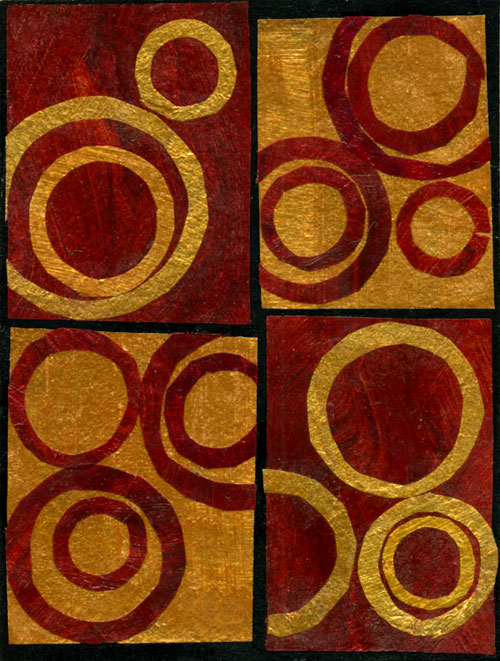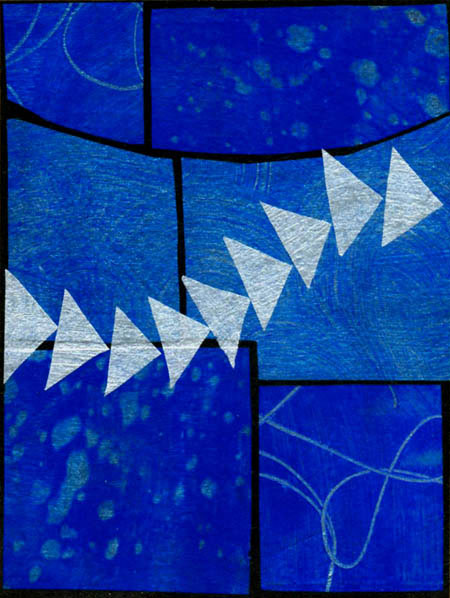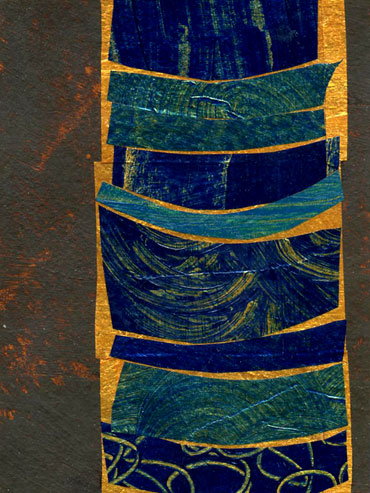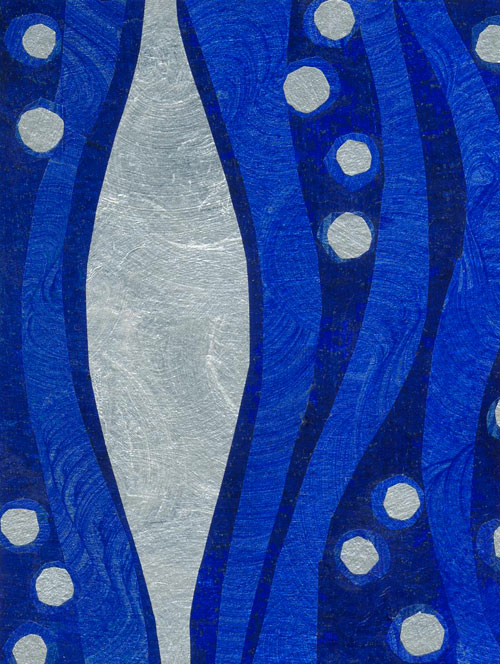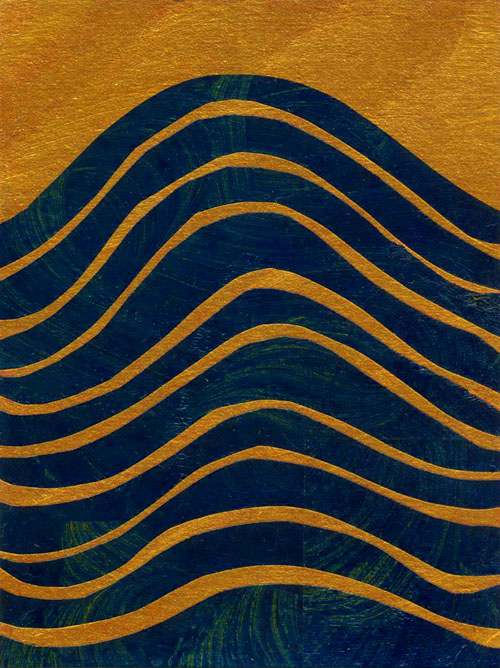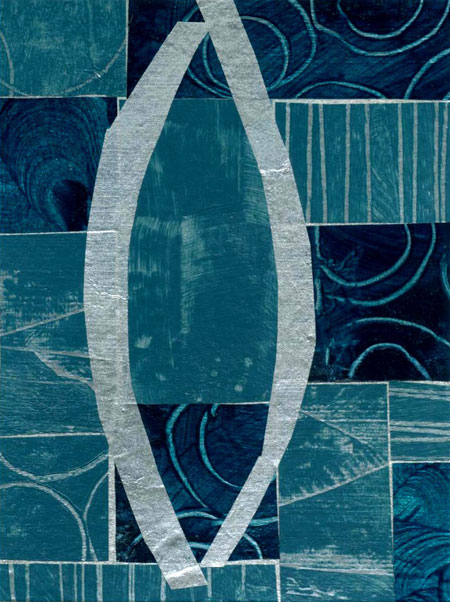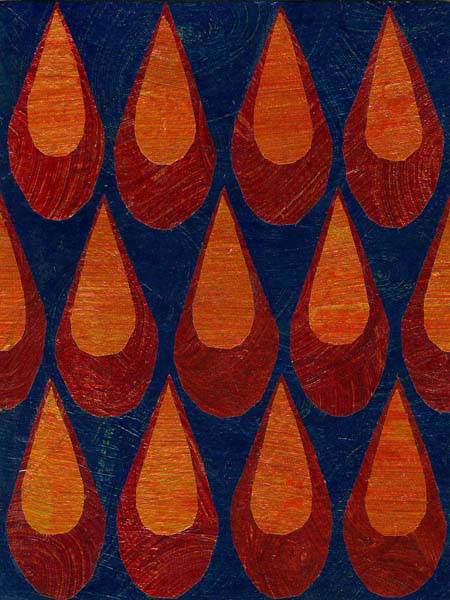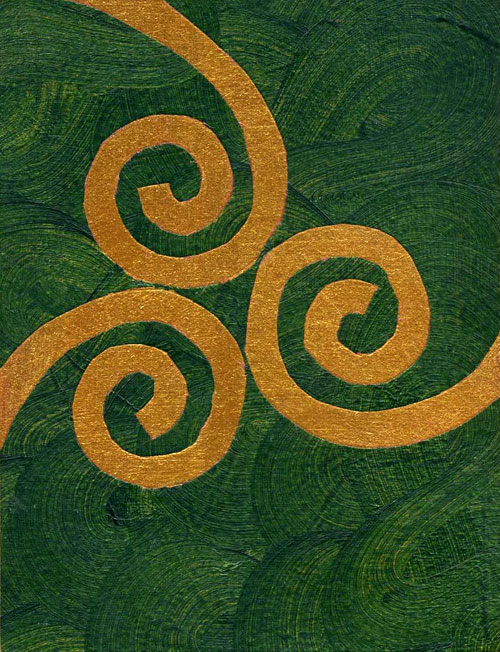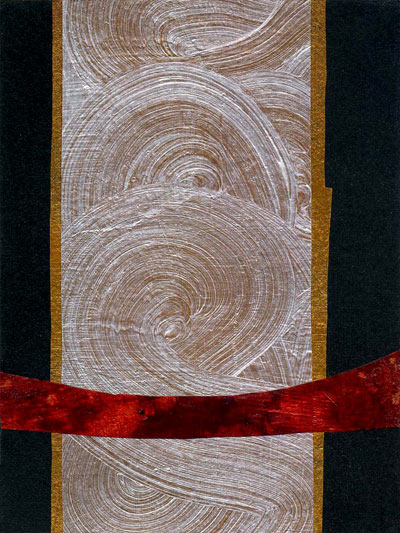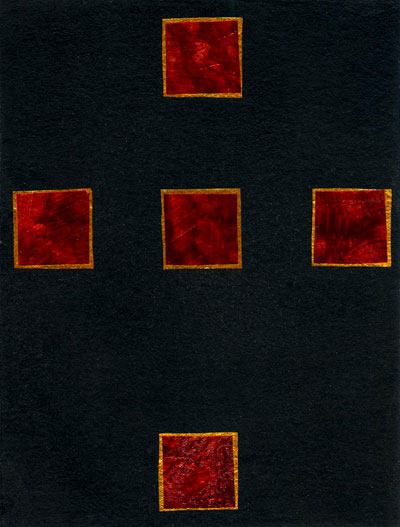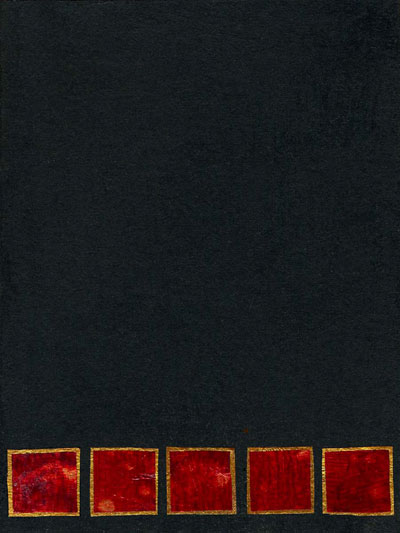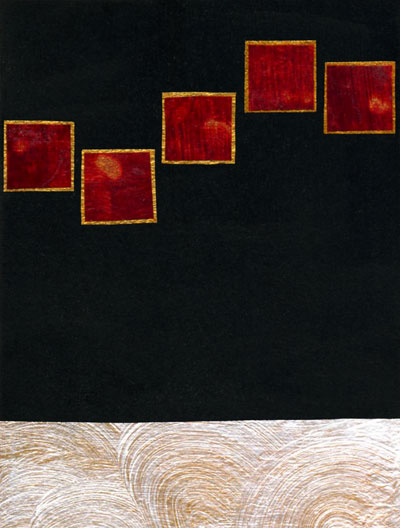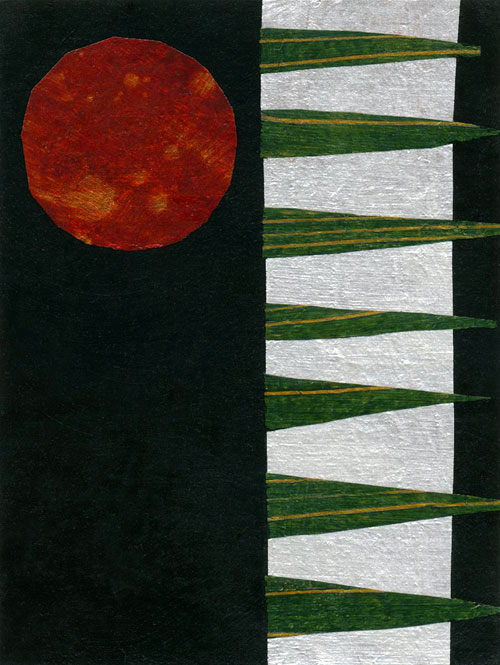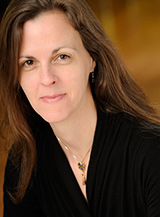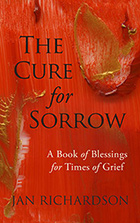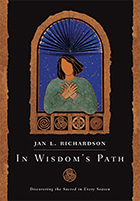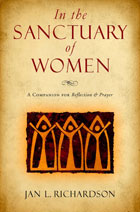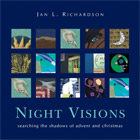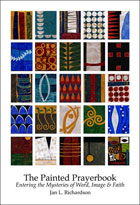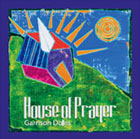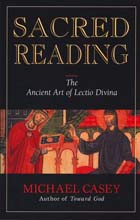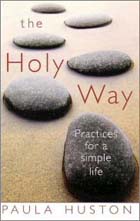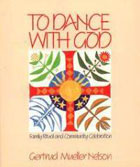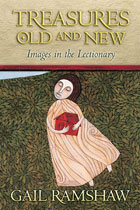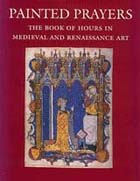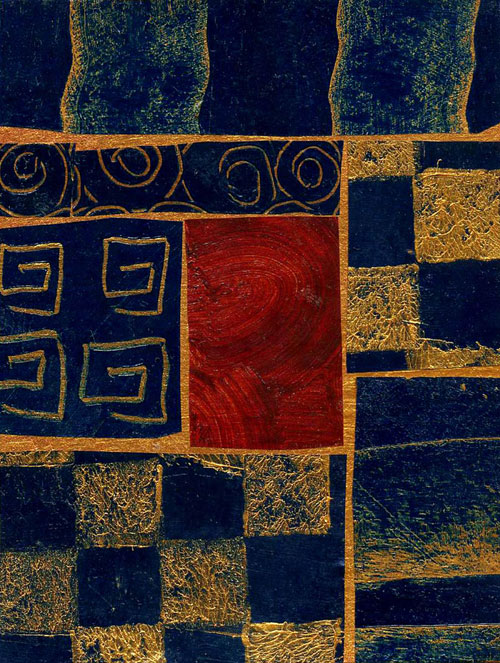 Image: The Secret Room © Jan Richardson
Image: The Secret Room © Jan Richardson
Reading from the Gospels, Easter 2: John 20.19-31
In his book The Art of Pilgrimage, Phil Cousineau writes that in every pilgrimage, there is a secret room, a place along the path that gives us insight into the deep mystery of our journey. In describing this hidden room, Cousineau draws on a story that poet Donald Hall tells of friends who purchased an old farmhouse. Cousineau writes,
It was a ‘warren of small rooms,’ and once they settled in and began to furnish their new home they realized that the lay of the house made little sense. ‘Peeling off some wallpaper, they found a door that they pried open to reveal a tiny room, sealed off and hidden, goodness knows why: They found no corpses nor stolen goods.’ For Hall, the mystery of poetry to evoke powerful feelings finds its analogy here, in its ability to be sealed away from explanation, this is the place where ‘the unsayable gathers.’
And so it is on the pilgrim’s path. Everywhere you go, there is a secret room. To discover it, you must knock on walls, as the detective does in mystery houses, and listen for the echo that portends the secret passage. You must pull books off shelves to see if the library shelf swings open to reveal the hidden room.
I’ll say it again: Everywhere has a secret room. You must find your own, in a small chapel, a tiny cafe, a quiet park, the home of a new friend, the pew where the morning light strikes the rose window just so.
As a pilgrim you must find it or you will never understand the hidden reasons why you really left home.
It is the day after Easter Sunday. I savored sleeping in this morning and am now in my writer’s nook at the top of the stairs, gazing out the window as I ponder the season past. I think of the pilgrimage these forty Lenten days led me on, the twists and turns they offered, the questions and challenges they posed, the graces they beckoned me to see.
Where was the secret room?
I think of a day in the week just past, when I went with my sweetheart to the Morse Museum of American Art in Winter Park, not far from where I live. The primary draw of the Morse is its collection of works by Louis Comfort Tiffany, the artist famed for his stained glass designs. I have always liked Tiffany well enough—a poster of one of his windows accompanied me through a succession of dorm rooms and apartments in college—but in more recent years found I had a somewhat limited affinity for this kind of work. I thought it was pretty, in an ornamental fashion, but didn’t go much beyond that.
I had, however, changed as an artist since the last time I had walked through the museum’s doors, had begun to work in ways that—I came to realize—altered the way that I saw Tiffany’s work. And so I found myself in front of one of his windows last week, leaning in close, pulling back, leaning in again. I was stunned by his line work, the loose style so markedly different from the stained glass designs of previous centuries. His lines captivated the part of me that had begun to work in charcoal since I’d last been to the museum, and had become fascinated with how the lay of a line—how it turns this way, then that—can convey a whole world.
And, between the lines, was the remarkable glass, so distinctive of Tiffany, who radicalized the manufacture of stained glass and turned each fragment into an art form in itself. I spent a long moment at a table that offered pieces of Tiffany glass to touch. Every piece a different texture—smooth, coarse, rippled, ridged. A fragment that so looked like flame that its coolness seemed incongruous. I ran my hand over each piece, each a living link with its maker, each an embodiment of his vision and daring, each a window onto the mysterious crucible that gives rise to art, each a threshold beckoning me deeper into my own creative path and reminding me why I set out on it in the first place.
This week’s gospel lection offers us a secret room, and, with it, an invitation to touch, to cross more deeply into Jesus’ story and our own. John tells of a room in which the disciples gather—a locked room, for fear. For secrets. And there, in their midst, Jesus appears, offering his hands and side, offering peace, offering the Holy Spirit, breathing into them (“and God breathed into his nostrils the breath of life,” John means for us to remember). But Thomas is gone, John tells us, and will not believe unless he sees. So Jesus returns a week later, slides through the shut doors of the secret room, shows himself to Thomas. “Put your finger here and see my hands,” Jesus says, as if touching and seeing are one and the same. “Reach out your hand and put it in my side. Do not doubt but believe.”
History has labeled this disciple Doubting Thomas, as if his uncertainty were the most memorable thing about this follower of Jesus who, elsewhere, is the first to step up and say he is willing to die with him (John 11.1-16). Yet Jesus, as is his way, gives Thomas what he needs. In Jesus’ hands, in Jesus’ side, Thomas reaches into a secret room, a place that, though “sealed away from explanation,” as Cousineau writes, makes some kind of sense of the long pilgrimage that Thomas has undertaken with Jesus, to whom he is now able to say, “My Lord and my God!”
And you? Did the pilgrimage through Lent offer you a secret room? Somewhere along the way, did you find a place that offered, not an explanation of your path, but a window onto it, a space within it that enabled you to see it anew, and the one who called you there? Where was it, and what did you find there? How does it illuminate the way before you?
In the weeks to come, may we remember that Easter is not just a day but rather a season. May the gift and challenge of resurrection go with you, and may the path ahead be graced with secret rooms.
[To use the image “Secret Room,” please visit this page at janrichardsonimages.com. Your use of janrichardsonimages.com helps make the ministry of The Painted Prayerbook possible. Thank you!]
